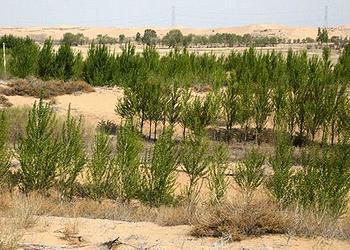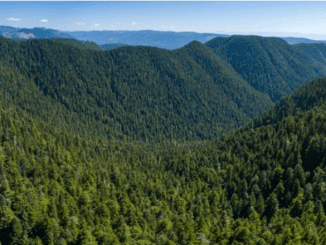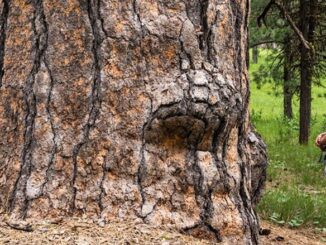
SYDNEY, Australia, March 31, 2015 (ENS) – China’s large-scale tree planting efforts and increasing rainfall on three continents have contributed to an increase in the total amount of vegetation on Earth over the past decade – reversing previous global forest loss, an international team of scientists reports.
Despite ongoing large-scale deforestation in the tropics, the total amount of vegetation on Earth has increased by almost four billion tonnes of carbon since 2003, finds an analysis of 20 years of satellite data using a new technique – measuring Earth’s natural radio waves.
An Australian-led international team of scientists published these findings in the current issue of the journal “Nature Climate Change.”

“The increase in vegetation primarily came from a lucky combination of environmental and economic factors and massive tree-planting projects in China,” said Dr. Yi Liu a lead author and remote sensing scientist from the Centre of Excellence for Climate System Science at the University of New South Wales.
“China was the only country to intentionally increase its vegetation with tree planting projects,” he said.
For instance, China’s Three-North Shelter Forest Program, also known as the Green Great Wall, is a series of human-planted windbreaking forest strips designed to hold back the expansion of the Gobi Desert. It is planned to be completed around 2050, and by then it will be 2,800 miles (4,500 km) long.
But tree planting in China is not the only reason for the overall increase in Earth’s vegetative cover.
“Vegetation increased on the savannas in Australia, Africa and South America as a result of increasing rainfall, while in Russia and former Soviet republics we have seen the regrowth of forests on abandoned farmland,” said Dr. Liu.
Yet forest loss is still happening elsewhere around the world. The greatest declines have been on the edge of the Amazon forests and in the Indonesian provinces of Sumatra and Kalimantan – the Indonesian part of the island of Borneo.
For their study the researchers pioneered a new technique to map changes in vegetation biomass over time, using satellite measurements of natural radio waves emitted from the Earth’s surface.
“Previous analyses of vegetation biomass focused on forest cover change,” said fellow lead author Professor Albert van Dijk of The Australian National University.
“With our approach we found unexpectedly large vegetation increases in the savannas of southern Africa and northern Australia. The increase in Australia occurred despite ongoing land clearing, urbanization and big droughts across other parts of Australia,” he said.

The increased greening means the total amount of carbon captured in Australia’s vegetation has increased.
The main cause of this strong growth over the savannas came from higher rainfall, particularly in recent years, although higher levels of carbon dioxide in the atmosphere may have helped plants there to grow more vigorously, the scientists believe.
But the situation could rapidly reverse if the savannas experience extended dry periods, says CSIRO’s Dr. Pep Canadell, a co-author of the study and director of the Global Carbon Project.
“This study shows this capture of carbon is very sensitive to year-to-year changes in rainfall over savanna regions, both for Australia and for the global CO2 budget,” Dr. Canadell said.
“It’s important to recognize that global warming would be happening faster if some of our CO2 emissions were not captured by this vegetation growth,” he said.
But even with the good news of nature helping regulate Earth’s climate, Dr. Canadell said there is still only one way to reduce the impacts of global warming.
“We know about 50 percent of emissions from human activities stay in the atmosphere even after the other half is removed by terrestrial vegetation and oceans,” he said. “The only way to stabilize the climate system is to reduce global fossil fuel emissions to zero.”
Copyright Environment News Service (ENS) 2015. All rights reserved.



